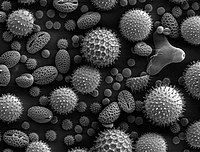
Photo from wikipedia
Atom probe tomography (APT) is a powerful characterization technique for obtaining three-dimensional structure and materials composition at the atomic scale. Typically, transmission electron microscopy (TEM) and APT techniques are combined… Click to show full abstract
Atom probe tomography (APT) is a powerful characterization technique for obtaining three-dimensional structure and materials composition at the atomic scale. Typically, transmission electron microscopy (TEM) and APT techniques are combined for a complete characterization of structure, morphology and chemistry. However, the full potential of these techniques is typically hindered by artifacts from specimen preparation (e.g., Ga implantation) and environmental conditions degrading the specimen’s surface (e.g., surface oxidation). Low energy (< 1 kV) Ar milling has been shown to improve TEM and APT specimens quality by removing Ga damage from FIB preparation [1, 2] and surface oxides [3]. Here, we present a post-FIB specimen preparation of APT specimens under controlled environments using concentrated beam (< 1 μm), low energy Ar milling for the removal of surface oxides and FIB-induced damage for TEM and APT analyses. This controlled environment is integrable to current APT sample transfer system as in [4].
Journal Title: Microscopy and Microanalysis
Year Published: 2019
Link to full text (if available)
Share on Social Media: Sign Up to like & get
recommendations!